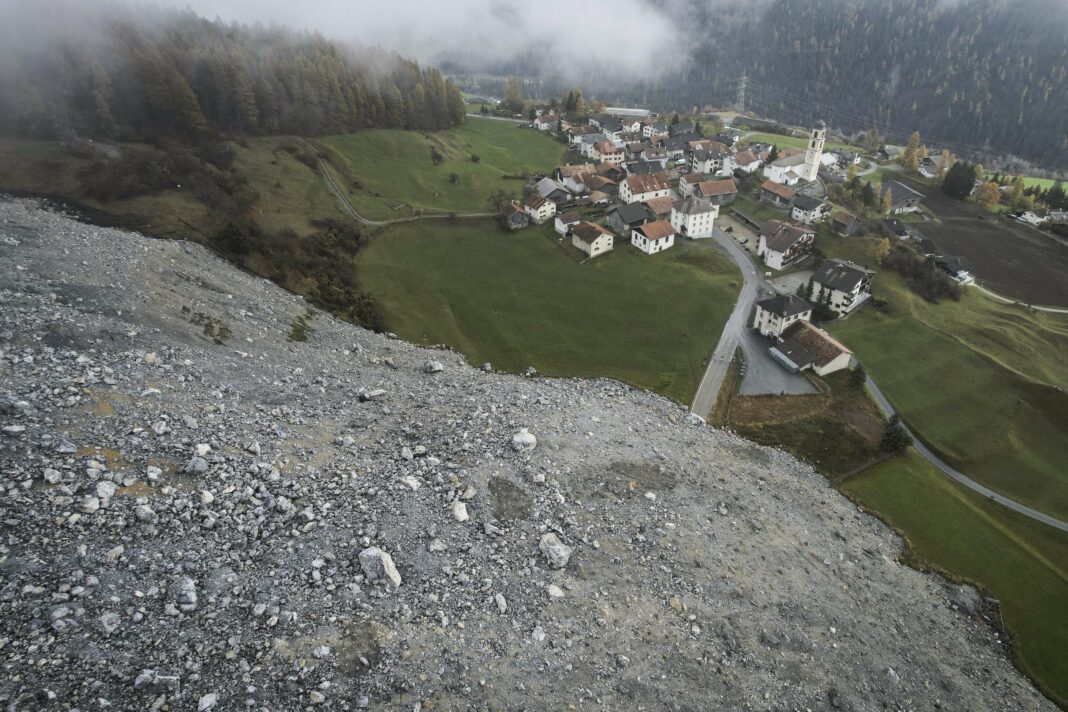Residents of Brienz face another potential evacuation due to geological risks from a loose debris pile on the mountain above. Following last year’s evacuation after a massive debris flow, experts warn that further instability could make the village uninhabitable for generations. Recent heavy rains have intensified movement within the debris, raising concerns of a possible slide. Geologists are actively monitoring the situation, acknowledging the uncertainty and ongoing anxiety for the community as they prepare for the possibility of a lengthy evacuation.
Recurring Evacuations in Brienz
For the inhabitants of the picturesque village of Brienz in the Grisons, the sense of déjà vu is palpable. Once again, they face the daunting prospect of evacuation, with no clear timeline for their return. The memories of last year’s evacuation are still fresh; a debris flow cascaded from the mountain, halting perilously close to their homes.
Today, the mountain looms with renewed threats. If the loose debris resting above Brienz shifts, it could trigger a devastating flow slide or debris avalanche. Such an event could unleash a torrent of loose rock, surging down the slope with a force that nothing could withstand.
Geological Concerns and Community Impact
Geologists, such as Andreas Huwiler, are acutely aware of the risks. As the head of natural hazards and protective structures in Graubünden, Huwiler is among the experts actively monitoring the situation. “Should a flow slide occur, the village may become uninhabitable for generations. Cleanup is not a feasible solution,” he warns. While the likelihood of such a catastrophic event remains low, its potential consequences are dire for anyone still in the vicinity.
The current concerns are rooted in last June’s geological events, when a mass of rock broke free above Brienz, releasing 1.7 million cubic meters of debris into the valley. However, a significant portion of that debris remains precariously perched on the slope, leading to heightened anxiety among residents.
Since the debris pile formed, geologists have been closely monitoring its stability. Initially, the loose material appeared to have settled down, leading experts to give the all-clear for residents to return. For several months, the situation remained stable. However, this summer brought unexpected movement within the debris pile. Following heavy rains in June, the debris shifted at an alarming rate of about 30 meters per year, a significant increase from its previous slow crawl.
By October, additional rainfall further destabilized the debris, accelerating its movement to a staggering 80 meters per year, or approximately 30 centimeters per day. “We were fortunate that nothing catastrophic occurred in October,” Huwiler reflects, though he notes that the debris pile has become increasingly sensitive to rainfall, indicating a possible impending slide.
The need for further investigation has prompted geologists to examine the debris mass more closely. In October, they utilized excavation equipment to analyze the lower sections of the deposit. Huwiler had hoped to find substantial rock blocks that would provide stability. Instead, they discovered a considerable amount of fine material, which raises the risk of a slide.
Compounding the threat, geologists found that the rock remains moist due to the heavy rainfall earlier in the year. This moisture can facilitate a flow slide that could devastate the village.
While the potential for a deadly debris avalanche exists, Huwiler suggests that the most probable scenario is continued stability, allowing the slope to settle once again. However, this may lead to prolonged anxiety for residents, as they prepare for an evacuation that could last at least six months. A sense of normalcy may return to the mountain, but geologists can only issue an all-clear when they deem the likelihood of a dangerous event to be extremely low.
The uncertainty is palpable for the Brienz community. The potential for movement on the slope hinges on three key factors: precipitation, rockfalls, and the unpredictable breakdown of rock fragments. Heavy rain or snowmelt could destabilize the debris pile, but the exact threshold remains unknown. Additionally, the impact of rockfalls from higher elevations could further complicate the situation.
Perhaps most concerning is the possibility of spontaneous slides caused by the gradual breakdown of rock within the debris pile itself. These unpredictable events add to the overall uncertainty surrounding the situation.
As the residents of Brienz brace themselves for the challenges ahead, the geologists continue their critical work, navigating the complexities of predicting potential hazards. For Huwiler and his team, this isn’t merely a repetition of past events; it’s a constantly evolving situation that demands vigilance and careful assessment.
